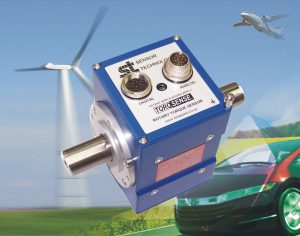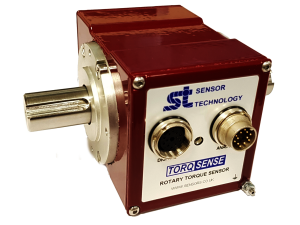A company that has been at the forefront of electric vehicle design and development for over 20 years has supplied a test rig based on a wireless torque sensor to a world renowned UK University automotive research facility.
Based in Fareham, Hants, Tirius has been built on pioneering work on an all-electric single seat racing car and a series of record breaking vehicles. It continues to bring the latest technology to clients in the form of product design and development and the provision of its range of electric drive systems.
Head of Tirius, Dr Tim Allen, explains: “We are helping the university’s research team develop electric drive train technology typically found in ‘A-Class’ cars, for example urban runarounds and small family hatchbacks. Specifically we are currently looking at permanent magnet traction motors in a number of sizes and configurations, with a view to optimising electronic control for each motor type.”
 The research involves running each motor on a test rig through its full output range and mapping its torque output at many points to build up a performance profile. The design of the controller can then be matched to the motor characteristics. This should be able to ensure that the motor runs in its optimum operating zone as much as possible, maximises motor life and regenerative braking, minimising wear, and is as energy efficient as possible.
The research involves running each motor on a test rig through its full output range and mapping its torque output at many points to build up a performance profile. The design of the controller can then be matched to the motor characteristics. This should be able to ensure that the motor runs in its optimum operating zone as much as possible, maximises motor life and regenerative braking, minimising wear, and is as energy efficient as possible.
The design of the test rig is in fact quite simple, thanks to the torque sensor, a TorqSense, as made by Sensor Technology in Banbury.
“We are pleased to promote TorqSense and the guys at Sensor Technology,” says Tim. “We have been using their kit for many years and in many different roles. The bottom line is that they are easy to use, accurate and great value – partly because they can be re-used once their original project has been completed.
TorqSense is a good choice for this work because its non-contact operation allows rapid set-up during the profile building test runs. It also means extra drag forces are not added to the system, so measurements represent true values and calculations are therefore straightforward.
TorqSense uses two piezo-electric combs which are simply glued to the drive shaft at right angles to one another. As the shaft turns it naturally twists along its length very slightly and in proportion to the torque, which deforms the combs changing their piezo-signature. This change is measured wirelessly by a radio frequency pick up and is a measure of the instantaneous torque value.
Its data is output to a very user-friendly computer screen which uses graphics to aid easy interpretations. In fact the display on the computer is similar to a car’s dashboard, so most people understand it intuitively. Further, the data is automatically logged for further analysis.
Tim again: “With our type of research work there are some potential errors that we have to look out for, including time-based zero-drift, bending moments on the shaft, bearing losses, temperature fluctuations etc. These are easily accounted for with TorqSense-based test rigs. Normally you have to account for the drag caused by the slip rings, but the wireless TorqSense does not use them, so that is one less calculation – and one less fiddly fixing task.
“A great benefit of TorqSense is the ease with which it can be mounted and dismounted, which simplifies research work where frequent reconfiguring is required.”
The University project will take two or three years to complete and the TorqSense test rig will be worked hard during this time. “At the end of the work, I have no doubt that the TorqSense will be reused in a new research program. It’s what we do in-house at Tirius.”





